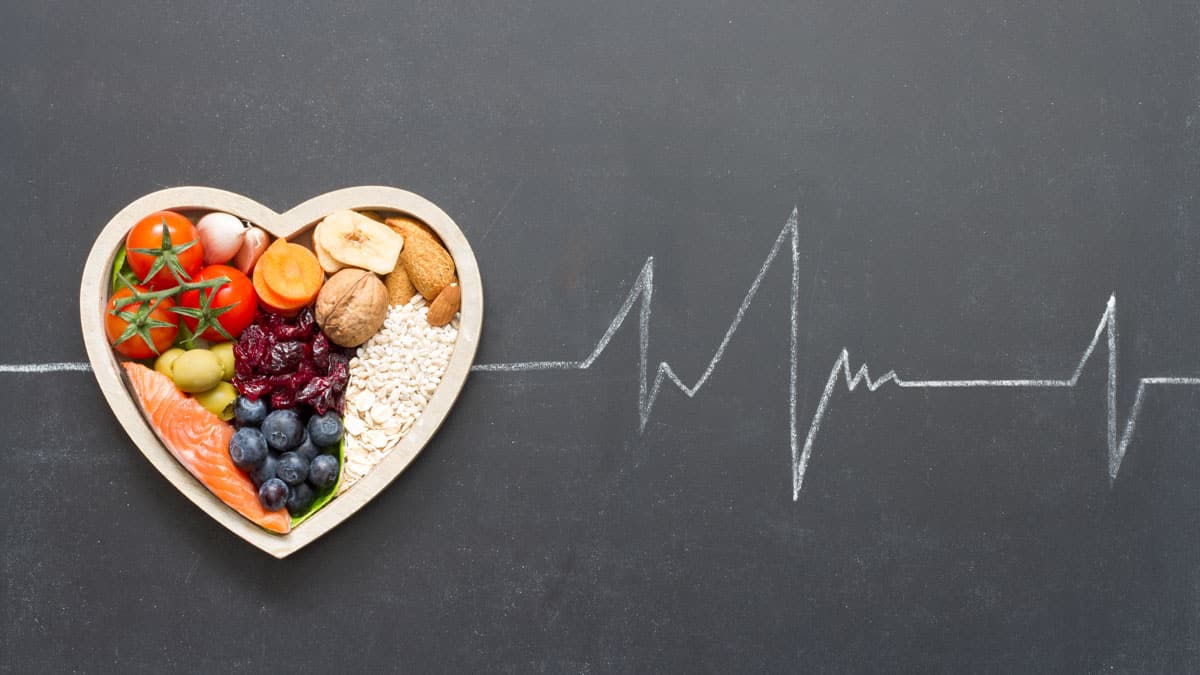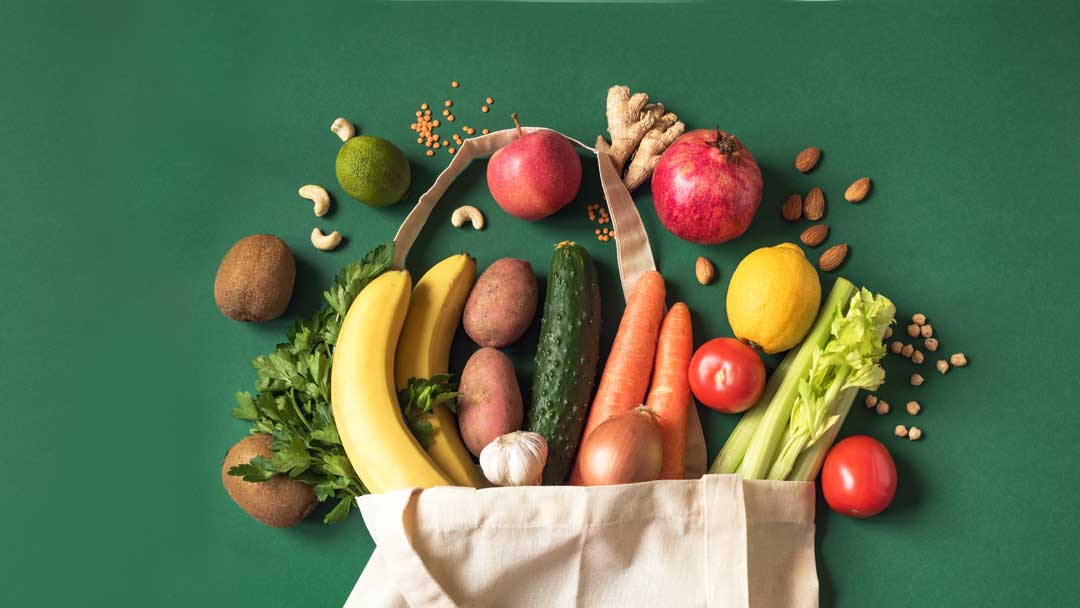Keeping your heart strong and healthy is essential because men are twice as likely to suffer a heart attack than women. Fortunately, simple lifestyle choices like healthy eating and getting active can help prevent up to 80% of premature heart disease and stroke.
As a Registered Dietitian at TELUS Health MyCare™, I often get asked what foods men should eat to reduce their risk of a heart attack or stroke. So, let’s start by exploring why healthy eating minimizes that risk.
The connection between diet and heart health
To understand why healthy eating can reduce your risk of heart attack, it’s important to know what causes a heart attack.
A heart attack happens when an artery that sends blood and oxygen to the heart becomes blocked, and the heart can’t get enough oxygen.
In most cases, fat, cholesterol and other substances build up over time, forming plaque in your arteries. When plaque ruptures, it can cause a blood clot. This can block blood flow to your heart, causing a heart attack. If the blood that flows to your brain is blocked, it causes a stroke.
Healthy eating reduces your risk of a heart attack for several reasons, including:
- Keeps cholesterol levels in check: High LDL cholesterol (often called “bad” cholesterol) causes fatty deposits in your blood vessels, making it difficult for enough blood to flow through your arteries to your heart.
- Helps regulate blood pressure: High blood pressure (also known as hypertension) can damage your arteries, decreasing blood flow and oxygen to your heart.
- Reduces inflammation: Certain foods create chronic inflammation inside your body. Inflammation promotes the growth of the plaque that forms in your arteries.
- Weight management: Obesity can lead to fatty material building up in your arteries.
Foods that lower your risk of a heart attack
Vegetables and fruits
Veggies and fruits are packed with fibre, antioxidants, vitamins and minerals. Fibre promotes fullness and helps maintain healthy cholesterol levels. The “good” kind of cholesterol (HDL) helps to remove excess cholesterol from your body. Fresh and frozen veggies and fruits are great options.
Tip: Aim to include at least half a plate of vegetables and fruits with your meals.
Nuts, Seeds and Legumes
Nuts (like almonds, pecans, and walnuts) and legumes (like beans and lentils) are excellent plant-based protein sources. They are fibre-rich and lack the saturated fat in some animal-based proteins. Legumes also keep you full longer and help to maintain healthy cholesterol levels.
Tips: Dried and canned beans are good choices. Rinse the canned beans with water as you prepare your meals to lower your salt intake. Try one or two meatless days during the week to eat legumes more often. Aim to fill up one-quarter of your plate with legumes.
Whole grains
Whole grains are nutrient-dense with vitamins and minerals and are good sources of fibre. Unlike refined grains, where parts of the grain and its nutrients are removed during processing, whole grains offer the complete package and their full benefits.
Examples of whole grains include steel-cut and rolled oats, quinoa, barley, and brown rice. Certain whole grains, like oats and barley, are rich in soluble fibre; eating these grains may lower the risk of heart disease.
Tip: Aim to fill your plate with ¼ of whole grains more often.
Fish and seafood
Fatty fish like salmon, trout, mackerel, and sardines are low in saturated fat and rich in omega-3 fats that protect the heart by slowing plaque buildup in arteries.
Tip: Aim to fill ¼ of your plate with fish and seafood.
Plant-based oils
Not all plant-based oils are created equal; some cooking oils, such as extra virgin olive oil and avocado oil, have healthy monounsaturated fats that could help lower the “bad” cholesterol (LDL) levels.
Tip: Focusing on the type of cooking oils and fats you include is as important as the amount you eat long-term.
Heart-healthy dessert options

Simple desserts made at home with fruit and minimal added sugar are best. Here are some ideas:
- Apple berry crumble (go easy on the butter and sugar)
- Greek yogurt in place of ice cream/whipping cream
- Homemade cookies with oats, nuts and dried fruit
- Peanut butter chocolate oat bites
- Cinnamon-baked pears with toasted walnuts
- Chocolate chia or chocolate avocado pudding
Foods that may increase your risk
Too much salt, saturated fat and overly processed foods should be eaten in moderation. You can still enjoy these foods occasionally, as no one food will cause or prevent a heart attack.
Red meat, such as beef and lamb, has higher levels of saturated fat than poultry, like chicken and turkey. Eating too much saturated fat can raise the LDL cholesterol (aka the “bad” cholesterol), increasing the risk of heart disease.
The risk for heart disease doubles when a diet consists of too much processed meat, such as pepperoni and bacon. This significant increase is largely due to salt, one of the contributing factors to high blood pressure. Again, moderation is key here.
Most effective dietary changes after a heart attack

If you have experienced a heart attack, you likely already know eating well will minimize future problems.
There is no need to avoid one or more foods entirely. Make some of these small changes to adjust your diet slowly.
- Prepare more meals at home so you can control the amount of salt, sugar, fats, and oils added.
- Hold the salt by prepping meals with herbs and spices more often.
- Increase your vegetable and fruit intake; make it a habit to include at least half a plate of vegetables and fruits with meals.
- Choose plant-based foods more often: veggies, fruits, nuts and seeds, legumes, tofu, soy, whole grains, and extra virgin olive oil.
- Swap foods high in saturated fat, like red meats, processed meats, and butter, for foods with healthier unsaturated fats, like fish, avocados, olive oil, seeds and nuts.
- Eat fewer foods made with refined carbohydrates, such as cookies, pastries, juice, chips, and pop and opt for foods made with whole grains more often.
What’s your heart attack risk level?
The Canadian Men’s Health Foundation offers a free tool called Men’s Health Check to help predict your future health for common men’s health conditions–like heart attack–by evaluating your physical stats, lifestyle, and family history.
In 10 minutes, this risk assessment tool will generate a free personalized report that shows your risk level for 8 of the most common health conditions affecting Canadian men.
The bottom line
There is no one specific food or diet plan to prevent a heart attack or stroke. Focus on introducing one or two changes at a time and slowly add more.
If you’d like to learn more about how to take charge of your diet, contact a Telus Health MyCare dietitian, who can help you reach your heart health goals.
What do you think about healthy desserts? Yay or nay? Share in the comments below.
Are You at Risk?
Learn your risk level for the most common men’s health conditions in 10 minutes with a free, confidential, and personalized report.






I do lots of home cooking, but I sure do love salt, and all recipes emphasize the importance of salt in flavouring the dish. I use measuring spoons to try to keep a handle on how much I’m using. I assume the salt shaker is adding next to nothing though when I’m adding it at the table.
“The great majority of Americans consume excessive amounts of sodium, mostly in the form of commercially processed foods. Approximately 80% of our sodium intake comes from processed and restaurant foods, another 15% from foods that contain sodium such as olives and pickles, and only about 5% from salt added in the home.”
https://www.health.harvard.edu/blog/in-defense-of-the-salt-shaker-2019110618175
Home cooking really is the way to go to moderate salt intake. As you mentioned, most of the excessive amounts of salt comes from overly processed foods. A little bit of salt is good for you! It has some minerals in it that our body needs.
~Canadian Men’s Health Foundation team member